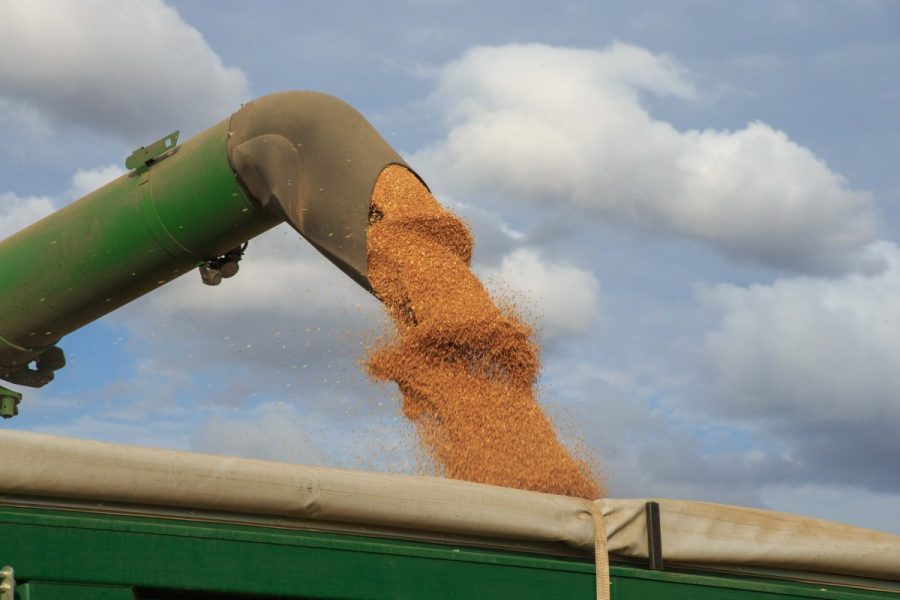With some growers experiencing their worst harvests on record, coupled with excruciatingly low grain prices, the question on many lips is when will things improve? CPM gathers early market intel for how the current campaign might play out.
“The key will be monitoring the progress of US exports, particularly upcoming harvest performance.” RICHARD JENNER
By Janine Adamson
AHDB’s late August harvest report revealed that while incoming winter wheat quality is good this year, output is highly variable from farm to farm. And, although yields have improved as harvest has progressed, a previous iteration of the report highlighted that for the first 10% of the crop, yields were down 11% on the five-year average.
Furthermore, in terms of the now completed winter barley harvest, yield is 1% down on the five-year average, while having done a complete 180, average OSR yield is the highest it’s been since 2011, at 3.98t/ha.
Openfield’s Richard Jenner explains that from a volume perspective, the dive in wheat yields means the UK is looking at 1M tonnes less winter wheat output than forecast. “Not only that, with the higher costs of production and low grain prices, some growers will be making a deficit this harvest.
“However, there is a positive – milling wheat is mostly making specification so there’s an opportunity to sell premium grain with a low chances of claims. The challenge truly lies in feed grains – this is where growers will be seeking improved prices,” he says.
US MAIZE CROP
As always, the UK market is at the mercy of global influence, in the case of this season, a burgeoning US maize crop. “Recent reports project an increase in both US acreage and yield, even more so than what was initially anticipated in June figures. This has a significant implication on the global animal feed market.
“Although US maize harvest isn’t until September, we can’t escape the weight on the domestic market which has almost collapsed under the strain,” comments Richard.
The abundance and affordability of US maize will prevent prices from increasing in the UK, he adds. “So the key will be monitoring the progress of US exports, particularly upcoming harvest performance – a reduced maize output would mitigate pressure on the UK. Equally, gleaning any ‘good news stories’ from Europe to support home prices, for example, poor quality and low spec from the Black Sea.”
According to Richard, it depends on how much UK growers have already sold, as to whether they’ll be currently thinking about crop marketing at all. “We also have no idea regarding this autumn’s plantings, although Harvest 2026 appears to be at a premium compared with Harvest 2025.
“We have to hope that all of the bad news is already in. Although the market is highly unlikely to jump around, there may be some subtle variances to be aware of along the way,” he advises.
LIMITED OPPORTUNITIES
Richard acknowledges that so far, any opportunities have been few and far between. “Bar a brief rally in June, the market has been on a downward curve since February – growers simply haven’t had many chances to take advantage of forward values.
“I believe we’ve had the worst of it. There are some watch-outs on the horizon, but this campaign has a long way to go. Unless you must sell grain now for cash-flow reasons, time is on your side.”
He recognises that from a grower’s perspective, agriculture feels like an unpalatable place this year. “But, the market is the market; it’s how you navigate out of it that counts. Be alive to external factors and have an awareness of global shifts – there may be brief opportunities where the market may rally. Brief being key, because the times of gradual, incremental shifts seem to be long gone.
“Either monitor the markets yourself, or work with someone who can help you. Admittedly, the conundrum will be what to do next.”
A crop Richard is keeping a keen eye on is barley. “Historically the UK is a large exporter of barley with an established programme in place. But based on the poor quality and lower yields from the East of England and some other parts of the UK, availability is significantly reduced.
“While ordinarily we’d be looking to export, UK demand may in fact mean the domestic market is more favourable this year,” he concludes.
This article was taken from the latest issue of CPM. Read the article in full here.
For more articles like this, subscribe here.
Sign up for Crop Production Magazine’s FREE e-newsletter here.




